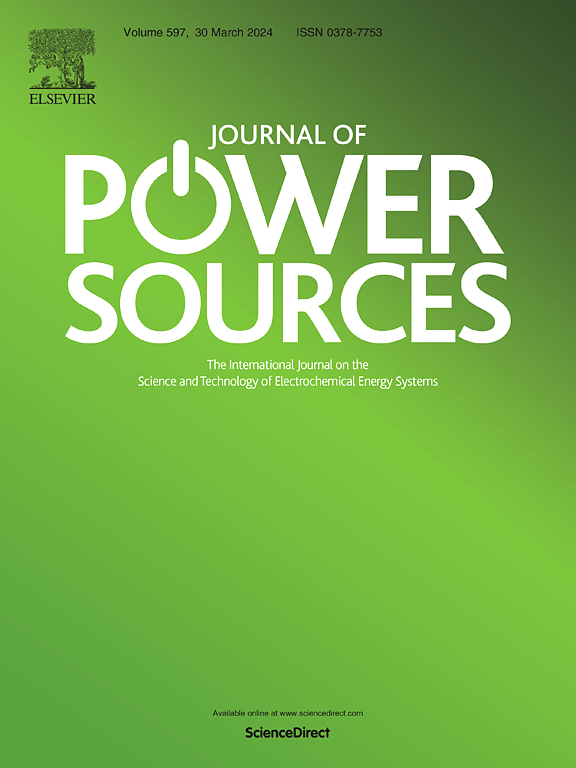Thermal stability evaluation and optimal design of polymer film capacitors for power pulse systems
IF 8.1
2区 工程技术
Q1 CHEMISTRY, PHYSICAL
引用次数: 0
Abstract
Polymer film capacitors are highly favored in pulse power systems due to their high-power densities and excellent fatigue resistance. However, thermal runaway under extreme operation conditions can severely affect the stability of dielectric capacitors, which is less well understood and managed. Here, we establish a pulse circuit model to analyze the energy dissipation of the metallized film capacitor during charging and discharging. It is found that the thermal effects of the capacitor are affected by four aspects of material property, device structure, load resistance, and operating condition. Heat generation in the pulse power capacitor is the result of the combined effects of voltage and current, with the Joule heat loss in the electrodes being the primary source. A mapping diagram is established to illustrate the relationship between peak current density, frequency, and maximum temperature. Additionally, the “Dangers Area” under extreme pulse conditions is identified and optimized. This work not only offers a general approach for studying the thermal effects in metallized film polymer capacitors, but also provides theoretical insights for the thermal management and design of pulse power capacitors in practical applications.
求助全文
约1分钟内获得全文
求助全文
来源期刊

Journal of Power Sources
工程技术-电化学
CiteScore
16.40
自引率
6.50%
发文量
1249
审稿时长
36 days
期刊介绍:
The Journal of Power Sources is a publication catering to researchers and technologists interested in various aspects of the science, technology, and applications of electrochemical power sources. It covers original research and reviews on primary and secondary batteries, fuel cells, supercapacitors, and photo-electrochemical cells.
Topics considered include the research, development and applications of nanomaterials and novel componentry for these devices. Examples of applications of these electrochemical power sources include:
• Portable electronics
• Electric and Hybrid Electric Vehicles
• Uninterruptible Power Supply (UPS) systems
• Storage of renewable energy
• Satellites and deep space probes
• Boats and ships, drones and aircrafts
• Wearable energy storage systems
 求助内容:
求助内容: 应助结果提醒方式:
应助结果提醒方式:


